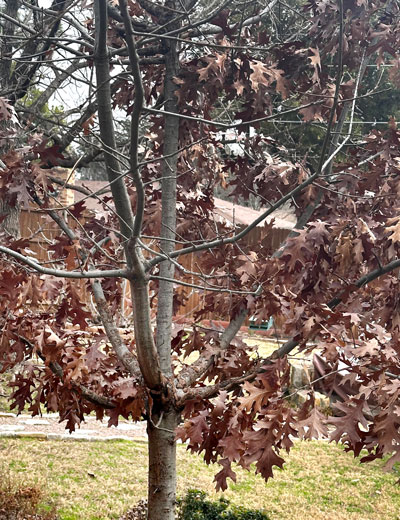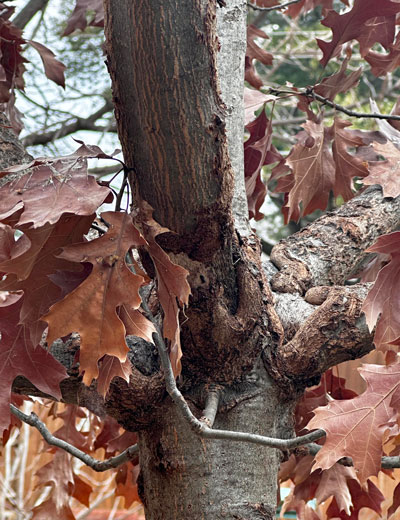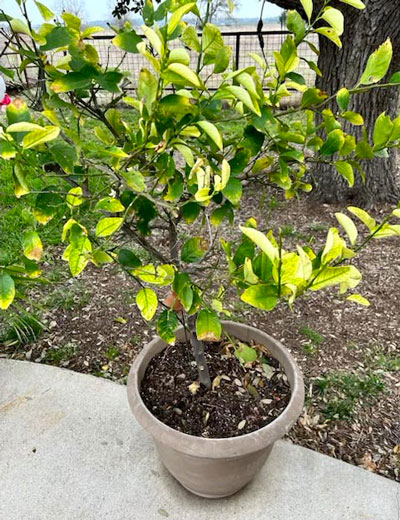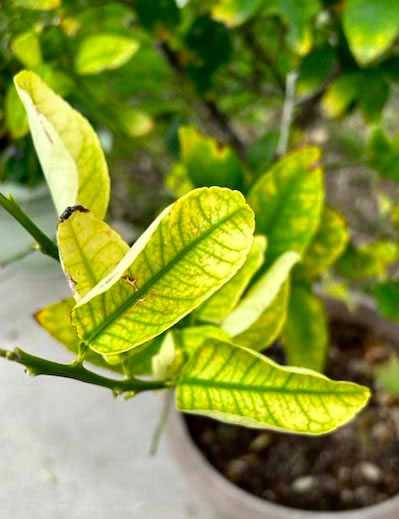Q&A – Ask Neil: February 22, 2024
(Please read these instructions carefully.)
Before you post your question, please look at recent issues to see if someone else has already asked it. You might find your answer there.
How to submit your question…
(Note: You may need to allow a pop-up window to come up in order to get the link for sending your photo(s). If you have already submitted your question and didn’t see the pop-up window, please click here.)
• Click the link provided below to post your question. After you submit your question, a new window will pop up giving you the address to which you can e-mail a SHARP, HIGH-RESOLUTION PHOTO to accompany your question. Please DO NOT SEND THUMBNAIL PHOTOS in case I need to zoom in to see things.
• Click here to post your question.
• Please ONLY POST YOUR QUESTION ONE TIME. We can only accept a set number of questions each week, and when we get duplicates it costs other people their chances.
• One question per reader, please.
• Please use this only for posting questions – not for standard emails.
• Watch for your answer in the following week’s e-gardens.
• I choose those of greatest general interest. For example, plant IDs seldom make the cut.
• I must have your first name or initials.
• I must have your city or county. (Texas is a very large state.)
QUESTION 1
WHY WOULD MY DISTYLIUM CINNAMON GIRL PLANTS KEEP DYING OUT?
Question: I thought I had prepared the bed as they liked, but I’ve lost two rounds of Distylium Cinnamon Girl plantings. What do they need to succeed? Cliff R., Midlothian.
Answer: Cliff, it’s great to hear from you! Knowing you to be a very good horticulturist, I’ve gone to extra effort to get the very best answer I could for you. Personally, I did not have good luck with my first plantings of distyliums, either. They were given or sold to me by a nursery along with the statement that I was going to fall in love with this plant. I did not.
Knowing they were out of the witch hazel family (along with loropetalums – a problem plant for me in my alkaline soil), I gave them the best bed prep I could.
At the same time, I watched a very long planting of probably 200 of them in a commercial landscape (south exposure, full sun). I’m in that building several times a month, and those plants were lost in February 2021 to the cold. I’ve noticed that they did not replace them with more.
I corresponded with a friend who had been in charge of a botanic garden in North Central Texas until just before the same February 2021 cold spell. He checked back with the folks who took over after him, and they lost their planting as well. So, that causes us angst as to their winter reliability (at least under extreme conditions).
Beyond that, I spent an hour online doing research to see what others have said. I found it interesting how many of them took one write-up and copied and pasted it saying that it was “the best shrub you never heard of” as they sang its glories. But all of those hymns were being sung from the southeastern United States and not so many from west of the Piney Woods of East Texas.
I’m going to guess that we both have also had problems with this plant not being satisfied with high temperatures, low humidity in summer, extreme cold in two of our recent winters, and highly alkaline native soil and irrigation water. As you and I have commented before, Midlothian’s shallow soil is notoriously alkaline. Even when you amend or replace it, things wear out fairly quickly. That’s what I found with my loropetalums, and it may have been true with your distyliums. They’re lovely plants that I’m going to have to resist from now on unless I move to a more favorable environment. (And my wife isn’t moving!)
Oh, I also discovered in my hour online that the first of these hybrid distyliums were developed by the highly respected Dr. Michael Dirr, retired from the University of Georgia. Mike and I were graduate students together at Ohio State working on the same research project. He is one of the finest plant people this country has turned out in the past 100 years. I continue to see his footprints through our industry.
QUESTION 2
HOW WELL WILL TIFTUF BERMUDA DO IN NORTH TEXAS?
Question: We have had a beautiful St. Augustine yard as recently as three years ago. Chinch bugs have destroyed it. We had a bid on taking out the old sod, leveling the ground, putting in sandy soil, and planting TifTuf bermuda. Will that type of bermuda do well in North Texas? Jeff W., Fort Worth.
Answer: I have not grown it personally, but the official website for the grass lists extremely impressive research partners. (https://tiftufbermudagrass.com) When I entered “Fort Worth” on the “find a grower” page I see that there are many around you. I would ask your bidder for referrals to lawns where they have planted it. See how it looks in late April as it starts to green up. That’s the best time to have it planted unless there is an unusual urgency. To issue the warning I always give: be sure that you have 7 or 8 hours of full sunlight daily for any bermuda. Many people assume that chinch bugs have killed St. Augustine when in reality it has died out due to excessive shade or drought.
QUESTION 3
COULD I USE ALUMINUM FOIL TO PROTECT THE TRUNKS OF MY TWO NEW PEACH TREES PLANTED LAST FALL?
Question: I planted two peach trees last fall. Can I use aluminum foil to wrap their trunks? Carla M., Big Sandy.
Answer: That’s a good option. Shiny side out. Extend the soil up 18 inches on the trunk to prevent sunscald and lessen the chance of borer invasion. Leave it in place for 22 months but be careful that the bark doesn’t grow to enclose it.
QUESTION 4
WHAT SHOULD WE DO TO HELP OUR RED OAK RECOVER FROM AN AGGRESSIVE SQUIRREL?
Question: Have you ever seen an alpha squirrel kill a 15-foot-tall Shumard red oak? My tree service company pointed it out, saying that the tree will likely die. My wife started it from a seedling and is so proud. Any suggestions? Michael R., Hurst.


Answer: It looks like the gnawing damage is relatively old. It appears that the tree is producing a roll of new bark to cover the wounds. Squirrels sharpen their teeth constantly, and this is the kind of damage that you’ll see. Usually, it’s farther out on the branches near the tips. I would think the tree will recover. It looks like the tree had a healthy crop of normal leaves when winter arrived. (It’s not uncommon for red oaks to hold onto their leaves through the winter. That’s not particularly a sign of any trouble.) Wait until spring before you take any drastic action. You could always hire a certified arborist for a second opinion. Arborilogical Services of DFW, our advertiser here, would be well skilled. I am concerned about the fact that all the branches seem to originate from one location on the trunk. That may not be the best option in the long run for the strength of the branch unions. That’s a good question for your certified arborist.
QUESTION 5
WHERE CAN I GET BULK PERLITE OR VERMICULITE?
Question: Where can I get bulk perlite or vermiculite? I’d like to add it to the soil mix of my metal raised garden beds. Thomas D., Denton.
Answer: These products are so lightweight that they are sold in very large bags rather than loose bulk. Of the two, perlite would be the better. Vermiculite packs together over time, while perlite holds its form. Of course, it does float, so you’ll probably find it on the ground outside your raised containers after heavy rains.
You might consider expanded shale. Yes, it does weigh a good bit, but it’s an outstanding soil amendment. It loosens clay soils, and it holds moisture and nutrients between waterings. It also lasts for a good while, and you can buy it in bulk from companies selling recycled organic matter, blended soil mixes and the like.
QUESTION 6
HOW ARE THE “SEED AND FEED” TURF SEEDS?
Question: How do you feel about “seed and feed” turf seeds where grass seeds are encased in, or packaged with, a fertilizer? Does it make a difference when you are planting? Megan H., Aledo, Parker County.
Answer: That would not be my choice. Bermudagrass is the turf we most commonly plant from seed here in Texas. Its seed is extremely small compared to other grass seeds, so I’m much more concerned about the young seedlings drying out just after they germinate than I am about their needing nutrition right away.
My recommendation is to wait to sow the bermuda seed until May when the soil is warmer. Sow the seed onto loose soil at the rate of 2 to 4 pounds per 1,000 sq. ft. using a hand-held spreader, half going east-to-west and the other half going north-to-south. It will be easier to sow it uniformly if you mix it with equal amounts of corn meal before putting it into your spreader.
Mow it as soon as it’s 1-1/2 in. tall, and fertilize it with a high-quality, all-nitrogen lawn food at half the recommended rate after the second mowing. In the long run that will cost you less and give you equal or better results.
QUESTION 7
WHY ARE MY PERSIAN LIME’S LEAVES YELLOWING?
Question: I’ve had yellowing/chlorosis of my Persian lime tree since last spring. I’ve tried slow-release fertilizers and citrus foliar sprays several times with no improvements. Any suggestions? Jon G., Florence.


Answer: Notice that the veins are the last parts of these leaves to turn yellow. Notice, too, that it’s most pronounced on the leaves toward the ends of the twigs. Those would be the leaves produced last, that is, the “newest” leaves. That is a characteristic description of iron deficiency in your plant.
Many things can contribute to iron deficiency. First, a lack of soluble iron in the potting soil. Iron becomes insoluble under alkaline conditions. That’s why most iron soil additives contain sulfur – to help acidify the soil, if only for a short duration. Even if you have an acidic, highly organic potting soil at the outset, watering with many cities’ water (highly alkaline in much of Texas) can eventually lead to highly alkaline potting soil.
Overly wet soils can inhibit uptake of iron. I had a large pot with a very happy plant growing in it outdoors one summer. Suddenly, by August, the plant started to fail. I tried different fertilizers and I checked for several other problems. What I finally realized was that the plant had sent a taproot out the drain hole of the pot. It had rooted into the ground and eventually plugged up the drain hole. My plant essentially drowned. Gas leaks, herbicide drift, and other oddball problems can also cause these symptoms.
Interested in learning more about nutrient shortages and how they manifest in plant tissues? We used cotton seedlings in the Plant Physiology courses at Texas A&M when I took the basic course in plant nutrition. Penn State has used beans in this study. This might be helpful.
QUESTION 8
WOULD A PLANT BAG WITH A DRAWSTRING BE BETTER FOR MY DURANTA?
Question: We have a large duranta that we have tried to protect from freezes using freeze cloth, but we have not been successful. I recently heard of a plant bag with a draw string bottom. Would it be better? Maxine K., Tomball.
Answer: I do not think it would have helped you at all. The bag in the link you sent would have been a tight fit, so it would have made contact with most of the plant’s leaves. Plus, it’s dark green. That’s a taboo, since it overheats on clear, sunny, cold mornings. That causes a rapid thaw of the plant tissues, and that’s extremely harmful to them. Plus, the secret of frost cloth is that it allows the solar warmth that has been absorbed by the soil to be re-radiated up within the “tent” made by the frost cloth, keeping warm air around the plant’s leaves. By using a draw string to snug this thing up around your duranta, you would have none of that advantage. Frost cloth gains you 7 or 8 degrees of cold protection, plus it keeps the cold wind from blowing across your plant’s leaves.
